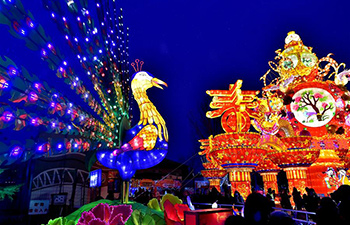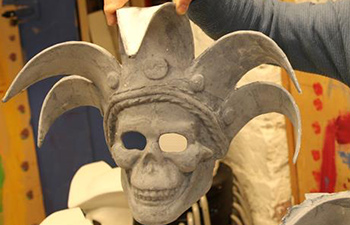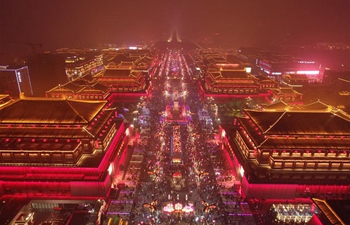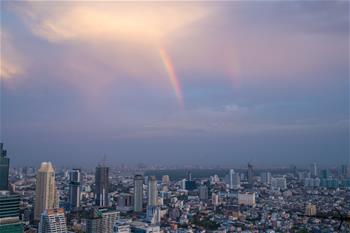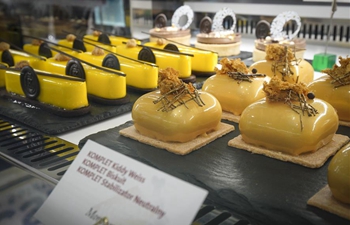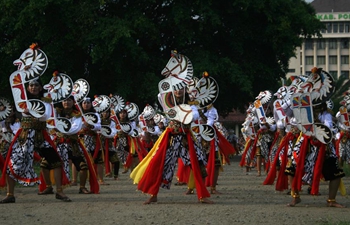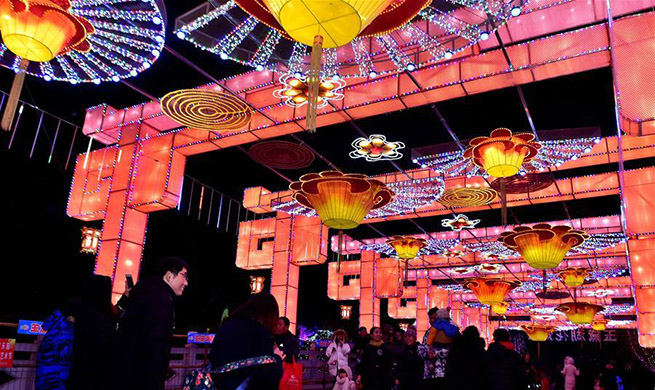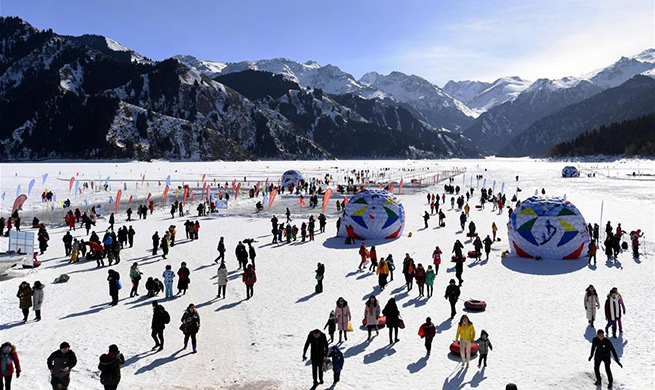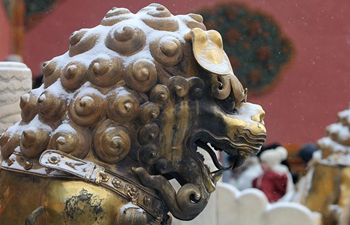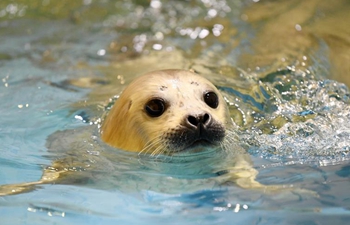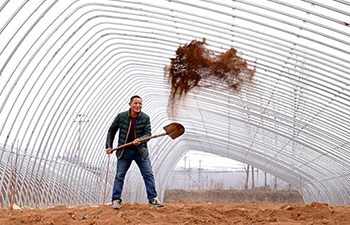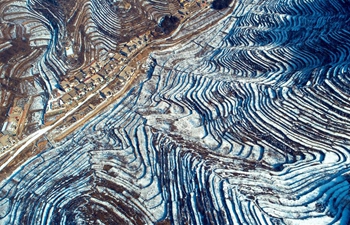SHIJIAZHUANG, Feb. 19 (Xinhua) -- Lantern Festival, which falls on Tuesday and is two weeks after the Lunar Chinese New Year, is the busiest time of the year for folk artist Wang De, but it is also the moment when he feels the most proud of his signature craft: creating molten iron fireworks.
Wang, who is a blacksmith by trade and an inheritor of the 500-year-old art of Dashuhua, literally meaning "creating tree flowers," in Yuxian County in the city of Zhangjiakou, north China's Hebei Province.
Scrap iron is melted to 1,600 degrees Celsius and thrown against a cold wall to create a firework effect.
Wang De, 55, and his assistants have presented over a dozen performances for villagers and tourists since Feb. 6 as part of the activities to celebrate the Spring Festival, or the Lunar New Year. This year's Spring Festival fell on Feb. 5. His night gigs will end after Wednesday.
It takes four people to complete the performance in the Tree Flower Square of the Nuanquan Town. Wang is the lead performer, while the other three help him manage the iron furnace.
For a show, Wang, wearing a straw hat and a thick sheepskin coat to protect him from the heat, holds a willow spoon in his hand, walks up to the furnace near the wall, dips the spoon into the furnace, and slings a spoonful of molten iron on the wall. The bursts of sparks from the wall wins thunderous applause from the audience.
Each performance uses about 300 kg of molten iron, which he buys from scrap stations.
"I wear the sheepskin coat inside out so it is not easily ignited when the sparks hit it," he said. His straw hat is specially designed with a wide downward brim so sparks will roll down without inflaming the hat.
But the high-risk tradition is still a game for the brave. During a performance years ago, Wang suffered heavy burns on his leg. "It took me two months to recover, " he recalled. He still bears the scars from the burning sparks.
An intangible cultural heritage of Hebei province, the art is found only in Nuanquan Township, which was founded in the Ming dynasty (1368-1644) as a garrison for Beijing.
The iron-making industry flourished in the township as a base for making weapons. Blacksmiths drew inspiration from the sparks and amused themselves by throwing molten iron on the wall during the festive season.
Both Wang's father and grandfather were blacksmiths.
"I learned the craft from my father. When I was young, I thought it was exciting. But years later I felt it was my responsibility to pass it on to the next generation," he said. "I have two sons, and I made my younger son learn the craft. He has to learn. Otherwise, it would be lost."
Though Wang's son, 22, has mastered the skill, he has not performed on stage yet.
The art of Dashuhua requires extraordinary courage, skill and strength. A single spoonful of iron weighs more than two kg.
"When I scoop iron from the pot, I should not go too deep. Otherwise, the molten iron will explode because of the contrast in temperature between the spoon and the hot iron," said Wang De.
Wang De performs at night on weekends from May to October and during the month when the Spring Festival takes place. He earns 300 yuan (about 44.34 U.S. dollars) per show. On weekdays, he attends his corn field.
Wang De knows how to create a spectacular firework effect and it takes years of practice to reach his level, village official Duan Yujiang said.
Once a show for the poor who could not afford fireworks, the molten iron art firework show has now become a strong tourist attraction.
Wang De hopes the revival of the tradition will bring more visitors to his hometown in Zhangjiakou, also the co-host city of the 2022 Beijing Winter Olympic Games.




